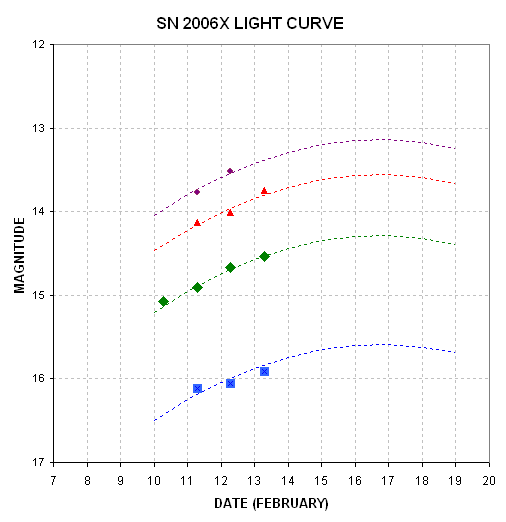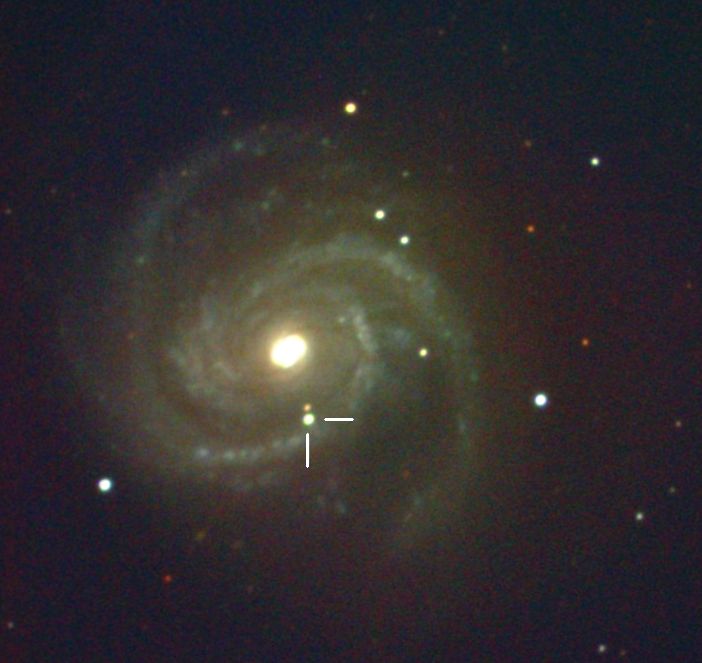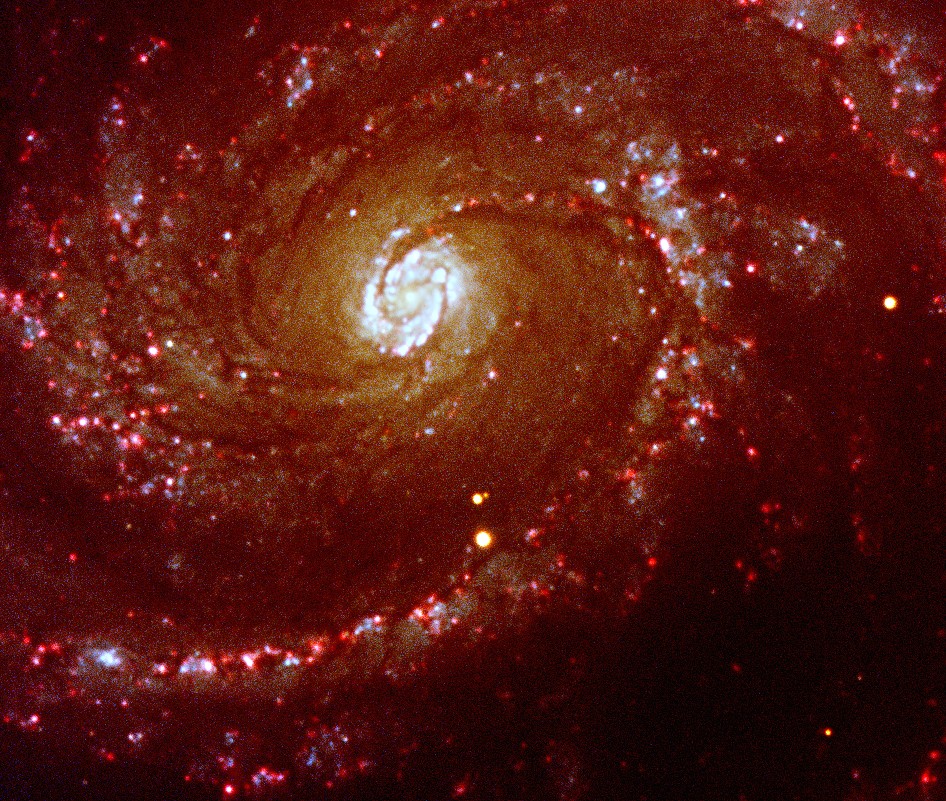
Bruce L. Gary (GBL)
Hereford Arizona Observatory (G95)
Links Internal to this Web PageThis web page is meant to record my observations of SN 2006X. It includes reference stars for BVRI observations.

Figure 1. False color image of M100 (using IRV instead of
RGB). FOV = 8.5 x 7.6 (crop of larger image). 2006.02.11 UT. Note that
bright stars are saturated and appear white regardless of their
color.
[Hereford Arizona Observatory, Celestron 14-inch, SBIG ST-8XE CCD, LVRI
total exposure times are 12, 16, 20 and 14 minutes; digital
development.]
These are my observations of SN 2006X. They have all been
"transformed" to correct for my telescope system's unique response to star color.

Figure 2. Light curve for SN 2006X.
SN 2006X BVRI Measurements
| B |
V |
R |
I |
B-V | Msc Comments | |
| 2006 FEB 10.3 | 15.08 |
|||||
| 2006 FEB 11.3 |
16.12 +/- 0.04 |
14.91 +/- 0.03 | 14.13 +/- 0.03 | 13.77 +/- 0.05 |
1.21 +/- 0.05 | |
| 2006 FEB 12.3 |
16.06 +/- 0.04 |
14.67 +/- 0.03 |
14.01 +/- 0.05 |
13.52 +/- 0.03 |
1.39 +/- 0.05 | All-sky cal'n |
| 2006 FEB 13.3 | 15.91 +/- 0.05 |
14.54 +/- 0.05 |
13.75 +/- 0.04 |
1.37 +/- 0.07 | ||
Notice that SN 2006X has B-V = 1.39 +/- 0.05. This means it's very
red. Unfiltered measurements are going to be too bright unless they're
"CCD transformed."
The following is my "photometric sequence" based on observations of nearby Landolt stars 2006.02.12 UT.
| Star # |
B |
V |
R |
I |
|
| 1 |
14.73 +/- 0.03 |
14.12 +/- 0.03 | 13.77 +/- 0.03 |
13.40 +/- 0.03 |
|
| 2 |
14.80 +/- 0.03 | 14.05 +/- 0.03 | 13.68 +/- 0.03 |
13.36 +/- 0.03 | |
| 3 |
13.78 +/- 0.03 | 13.12 +/- 0.03 | 12.77 +/- 0.03 |
12.43 +/- 0.03 | |
| 4 |
16.68 +/- 0.05 | 16.11 +/- 0.04 | 15.75 +/- 0.03 | 15.44 +/- 0.04 | |
| 5 |
13.40 +/- 0.03 | 12.91 +/- 0.03 | 12.63 +/- 0.03 | 12.33 +/- 0.03 | |
| 6 |
16.37 +/- 0.04 |
15.18 +/- 0.03 | 14.39 +/- 0.03 | 13.65 +/- 0.05 | |
| 7 |
16.94 +/- 0.05 |
15.73 +/- 0.03 | 15.01 +/- 0.03 | 14.41 +/- 0.03 |

Figure 3. BVRI magnitudes dervied from observations of Landolt stars
on the same observing night as these stars were assigned BVRI
magnitudes. FOV = 15.2 x 10.1 'arc. [Hereford Arizona Observatory,
Celestron 14-inch, SBIG ST-8XE CCD, unfiltered, total exposure of 12
minutes; digital development.]

____________________________________________________________________
This site opened: February 11, 2006. Last Update: March 2, 2006